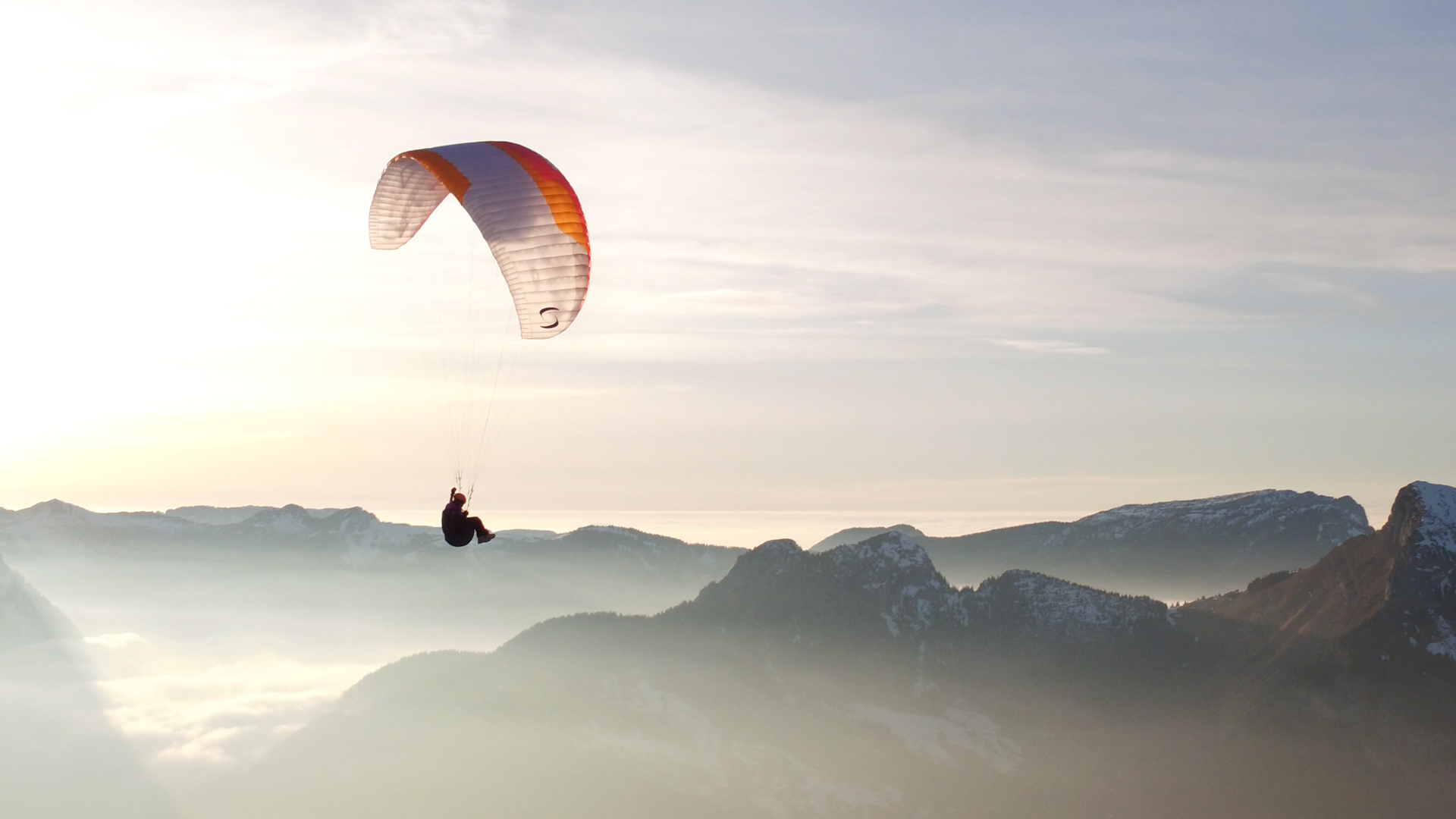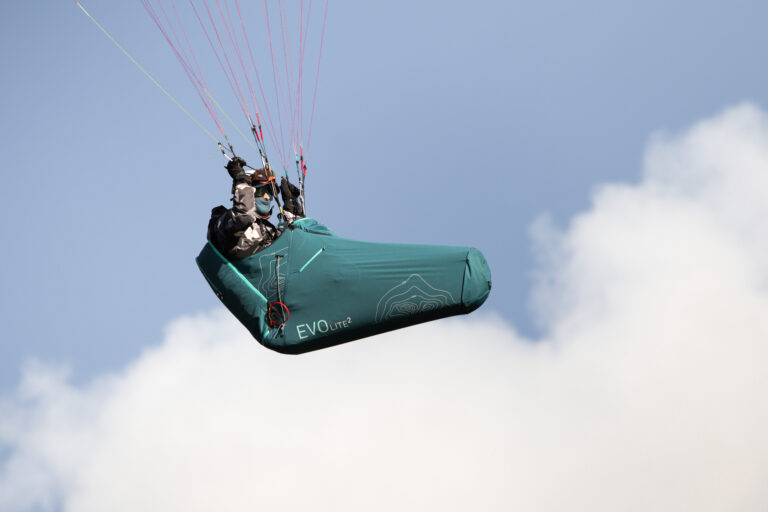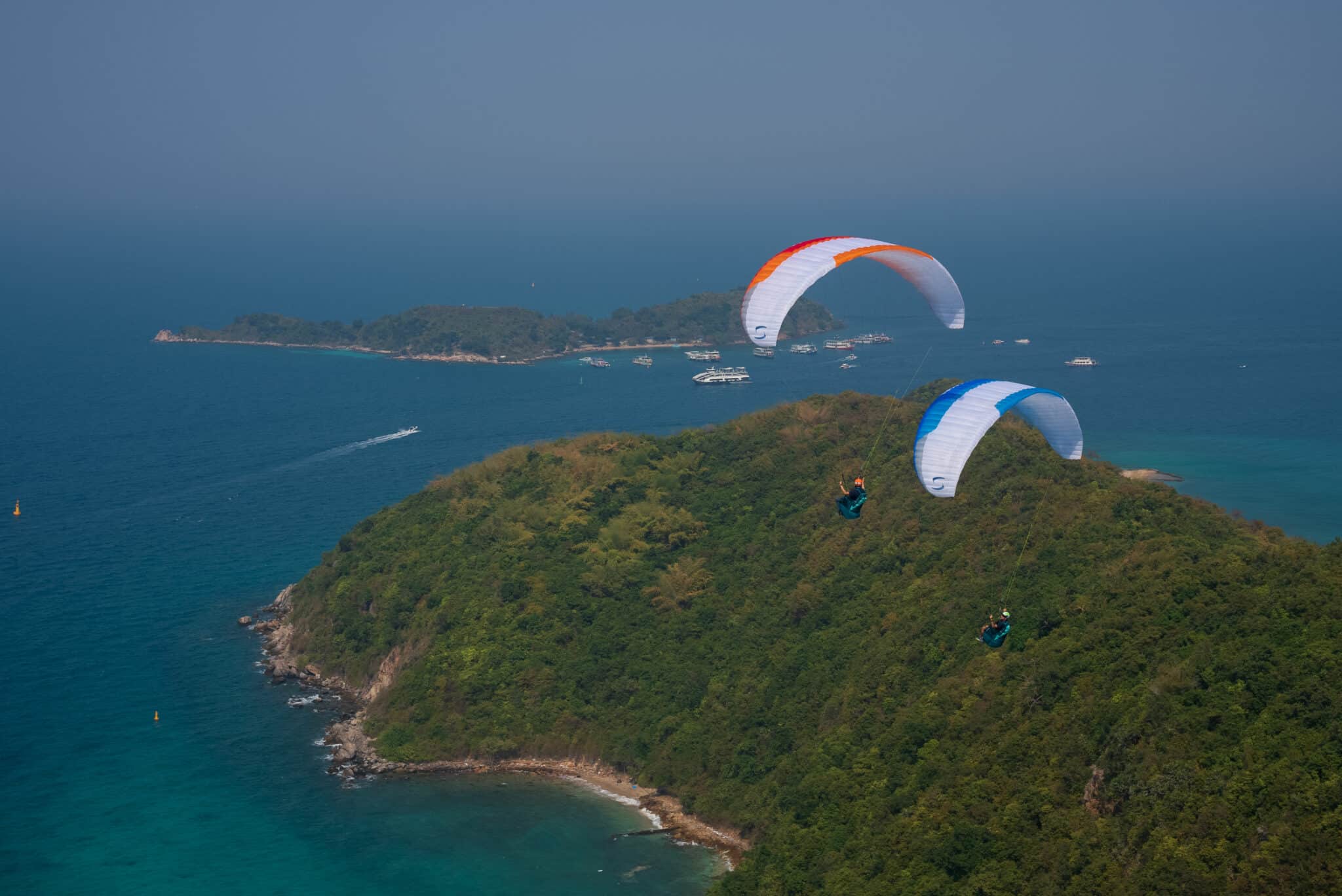
All you need to know about gliders
If you weigh less than 60 kg, then you've probably already been called a "small flying weight", and it's likely that you sometimes have trouble finding a glider that fits you. What's more, in the course of a paragliding pilot 's life, who hasn't heard that smaller gliders are less efficient than others?
Indeed, within the same glider range and with the same wing loading, the paraglider with the smallest surface area will tend to behave differently from the larger size. Where do these differences in behavior come from, and how can they be explained by design ? In this article, we'll take a closer look at this issue, which concerns many pilots.
Big Size Vs Small Size: What Are The Differences Between design ?
To understand where the differences in behavior between sizes of the same reference come from, glider, we need to look at the design paragliders.
When creating a new gliders range, designers start by developing theglider in a single size. This size is usually chosen to match the flying weight range of test pilots Flying weight range so that they can test the prototypes without weighting down to avoid distorting steering feel. Since test pilots rarely have a Flying weight range corresponding to the smallest gliders, larger sizes are developed first and then adapted to smaller surfaces.
After completing the development of the first size, the next step is to apply a homothety* to obtain a working basis for the other sizes. However, this is not enough to guarantee the performance of each glider. It is therefore necessary to individually adapt the characteristics and dimensions of each size before validating the production of the entire range.
*Homothety: Homothety is a geometric transformation that enlarges or reduces a figure while maintaining its shape. This means that the dimensions of the original figure are multiplied by a constant factor to obtain the new figure, which is a similar image of the original. In other words, homothety changes the size of a figure without distorting it.
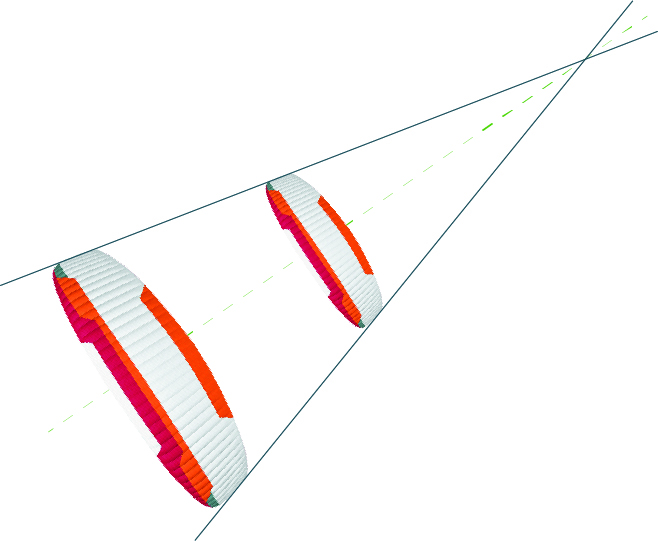
However, perfect homogeneity should reduce not only the dimensions of the structure and its geometry, but also the diameter of the rods and rods. lines used, or the thickness of the fabric that makes up the Airfoil. However, this is not the case in reality: the size of the materials, whether their diameter or thickness, will remain unchanged regardless of the size of the material. glider on which the designers are working.
It is therefore necessary to rework and modify the homothety achieved upstream so that the characteristics of theglider can correspond to the materials that remain common to the entire range. Therefore, we can already conclude that two sizes, although belonging to the same range, will never be perfectly identical in terms of structure and pure construction.
What are the consequences of these differences design ?
The materials used have a significant impact on the behavior of small paraglider due to their weight. Indeed, given that the diameter of a Rush remains constant whatever the size of the glider, its contribution to the total weight is more significant on small gliders than on large ones. This principle also applies to other components such as straps, lines and Fabrics. So, despite the reduction in glider size, the weight of materials has a proportionally greater influence on smaller gliders than on larger ones.
This additional weight influences the inertia of theglider, modifying its behavior in relation to the size initially designed by the designers. This inertia will tend to make theglider more reactive, with more energy in its movements.
In order to avoid a glider that "attacks" too much, designers have to modify the pitch settings to pitch up the ends ofglider and counterbalance this effect.
By slightly increasing the angle of incidence of the stabilos, the more energetic movements of theglider are smoothed out by a less biting Airfoil and the reopening of the glider is facilitated. On the other hand, this also creates an additional drag net, slightly degrading the performance of theglider.
To sum up, in order to guarantee a similar level of passive safety across the range, designers sometimes have to make concessions on performance. Note that this difference is minute and almost negligible on progression gliders . On the other hand, it's much more obvious at High level, on CCC-type competition gliders , where every detail can make a difference. This is the main reason why smaller gliders are reputed to be slower and less efficient than their bigger sisters.
Testing and certification: what are the consequences?
In addition to design, several other factors come into play when developing and launching glider for smaller pilots.
Designers are faced with another challenge, which may lead them to propose Flying weight range ranges higher than glider can actually handle: homologation and load testing.
To understand this point, you need to know that each size of glider is homologated individually from the rest of the range (which is why you'll find a different homologation report for each size). During homologation, a glider is tested twice: once at Flying weight range mini and once at Flying weight range max.
This is where our problem comes in: if the test pilot's Flying weight range is too light to reach the maximum Flying weight range , all he has to do is ballast himself to reach High . On the other hand, if he's too heavy for the minimum Flying weight range , there's nothing he can do about it, and we'll have to find a lighter pilot to carry out the test.
To Certify a glider with a very low Flying weight range , a very light pilot with the necessary steering skills must be available to take theglider through the certification tests. As you can see, such a pilot is not always available to fly smallglider.
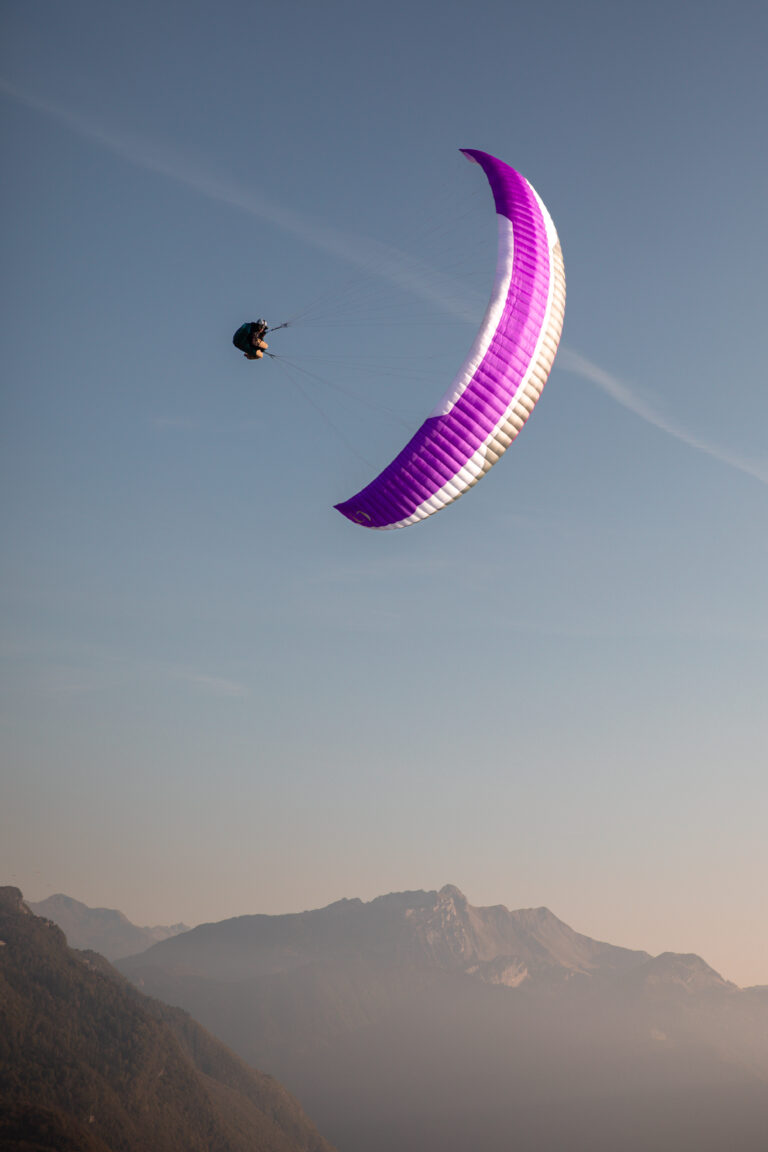
Finally, let's take a look at the load test. Unlike homologation, where each size is tested individually, only the largest size in the range is tested under load. Smaller sizes are then designed with the same level of resistance, even if the stresses and strains they will encounter are lower than those of the largest size.
As a result, the designer ensures that the entire range complies with the load test, but the smallest sizes are significantly oversized. This is very reassuring, but it also means extra weight for the smaller sizes. As we saw earlier, extra weight means extra inertia, which again brings us to the consequences described before : more aggressive behavior, twisting of the glider tips, extra drag and potentially degraded performance.
The evolution of the community paragliding pilot
Finally, we'd like to address a point that has more to do with the evolution of paraglider and Airfoil than with design .
These days, there are more small-scale paragliders than ever before, thanks in part to the growing number of women in the sport. Indeed, while women (who tend to be smaller than men) now account for around 1 in 6 pilots, just a few years ago there were far fewer. Technological innovations have also made paraglider more accessible, and paragliders are starting to fly at a younger age, which means they are also lighter. For all these reasons, market demand for glider small Flying weight range is constantly growing.
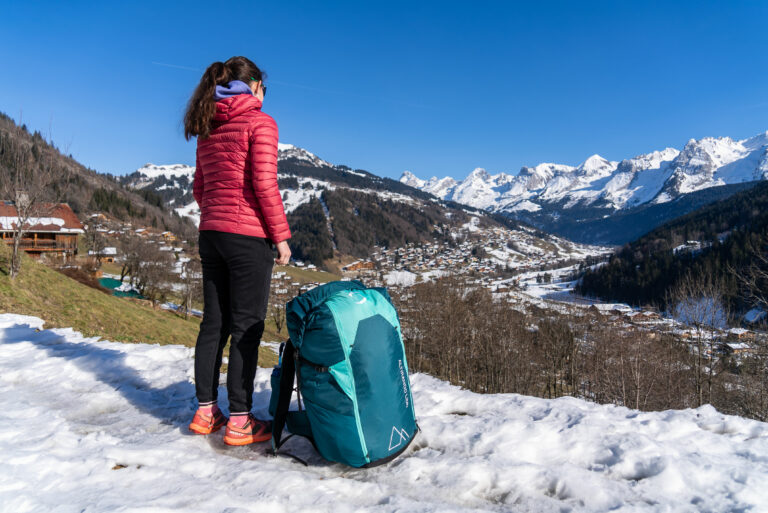
In the past, manufacturers had little interest in pursuing the development of smallgliders sizes, since this pilot Airfoil was particularly restricted. But now the market is growing, and demand for adapted equipment is increasing. That's why designers are taking moreCaution with their range, offering Flying weight range ranges that go lower than before. This market expansion is also prompting designers to take a closer look at the design challenges of small gliders , and to find solutions to guarantee performance comparable to that of larger sizes. In short, the industry is evolving to meet riders' needs.
In conclusion
You now have all the keys you need to understand the differences that can exist between two sizes in the same range, and what justifies them. Whether for reasons of passive safety or to adapt to market demand, the way in which small gliders are designed is constantly evolving, and is a hot topic in design offices.
However, it is essential to remember one essential thing: always choose your paraglider according to the Flying weight range range recommended by the manufacturer. It is not advisable to choose a larger glider and weight yourself down to get the best performance from glider . The best glider will always be the one that corresponds to your size.
For the small weights reading this article, we invite you to discover theglider that meets all these design challenges: the LEAF3 Light XXS, EN-B accessible from 45 kg Flying weight range, is still as fun and high-performance as its big sisters. Its steering remains playful and intuitive, to accompany you as you move on from your glider school.
For all other sizes, we hope you'll find what you're looking for in the Supair gliders range, so you can fly a paraglider that's just like you.
LEAF 3 Light XXS - designed for very light weights!
